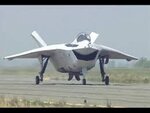FLYBOYJ
"THE GREAT GAZOO"
Wow - what I wrote, above, has no political content at all. It violated no forum rules. It was a direct response to the opinions offered in previous posts. And I never referred to people who disagree with me as "ill-informed naysayers," which is much more political than what I wrote.
This is clearly not the community for me. I apologize to all for politely offering a viewpoint that is apparently not welcome here.
As my last post, I offer the following facts for whomever has a mind open enough to consider them: The alleged $80 million cost per F-35 is not at all close to what each aircraft actually costs the taxpayers. That's the cost of only the engine and airframe. It excludes the R&D costs (many billions), the costs of initial sets of spare parts for each aircraft, the costs of the flight training simulators, the costs of the ALIS support system, and other accessories. It also excludes the costs of fixing the problems still associated with the aircraft, and the approximately $2 billion a year Lockheed Martin is paid to keep the fleet of F-35's flying. Finally, it should be acknowledged that the F-35 costs $44,000/hour to fly.
Foreign aid was brought up by another poster, which seems a lot more political than my comments directly addressing the subjects in previous posts. The return on the investment the USA gets from foreign aid is huge. The US spends less than one percent of its budget on foreign aid. In return, the goodwill generated helps the US accomplish all of its foreign policy goals, keeps many countries stable and helps ward off military conflict that would be bad for our country, and keeps diseases and other problems at bay before they can afflict the citizens of the US.
The average percentage of GNP from western industrialized nations devoted to foreign aid is 0.4%. The US gives 0.2%, ranking the US near the bottom.
We don't know what the return on the investment will be for the F-35 program.
You also fail to mention how much of that is based on FFP, contractor penalties and bugeted operating costs which are in a completely different funding bucket.
The average percentage of GNP from western industrialized nations devoted to foreign aid is 0.4%. The US gives 0.2%, ranking the US near the bottom.
And how does that compare in actual dollars?
Yea, you're right, perhaps this isn't the place for you.This is clearly not the community for me.


